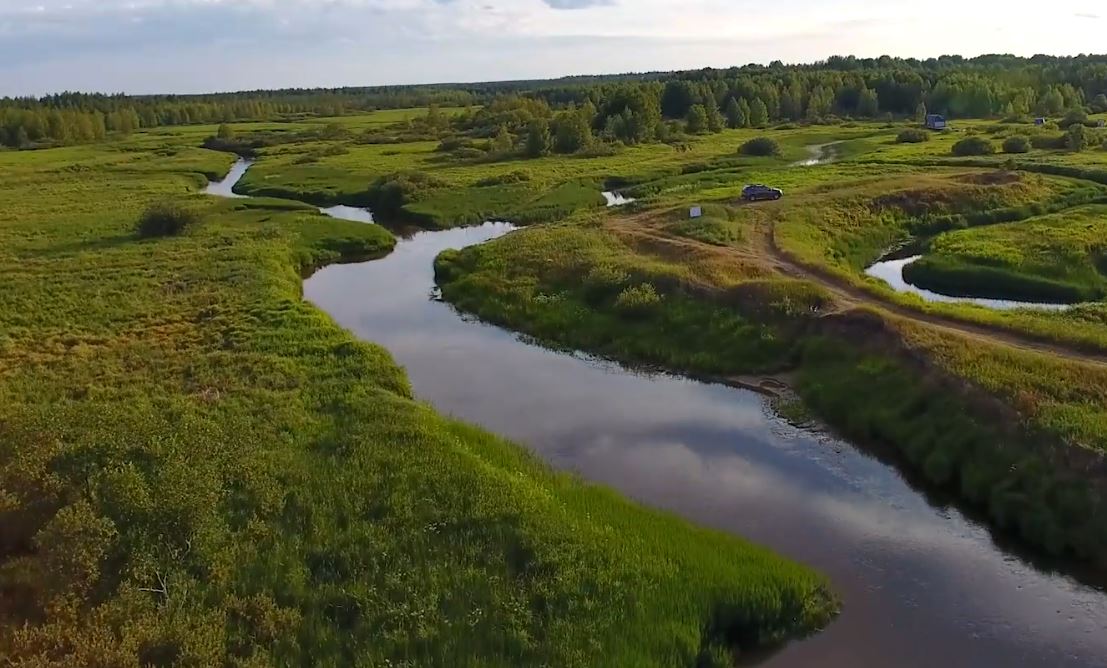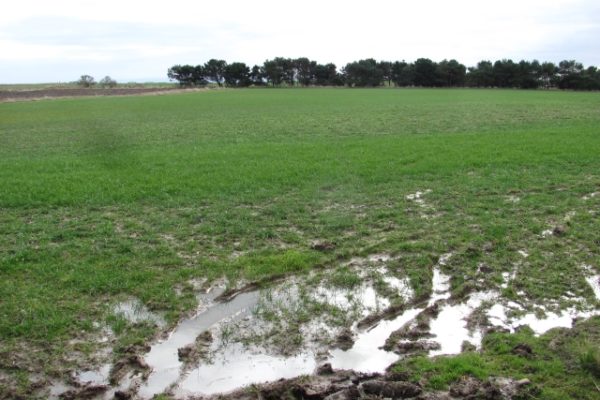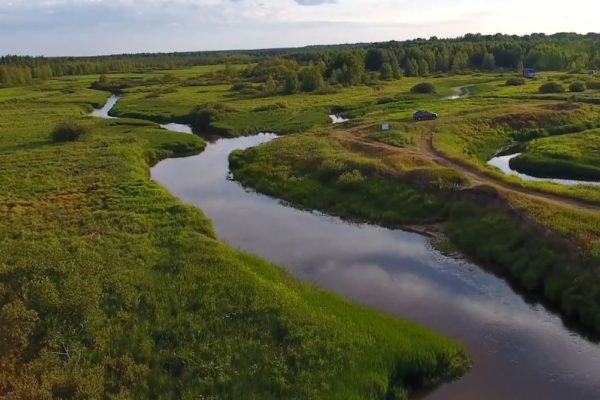Using Organic Matter to Alleviate Water Scarcity
4 July 2024As water scarcity becomes a more frequently occurring concern across the UK, it is important to explore methods to better manage the water you do have. In England, water scarcity is a larger issue than in Scotland, but by acting now based on findings south of the border you can ensure your business is more resilient in the years to come. One of the major focuses for English farms looking to alleviate water scarcity is increasing the amount of organic matter in their soils.
Research has found that soil organic matter can help enhance the soils water retention at field capacity which increases the amount of water available to the plants. A silt loam soil with 4% organic matter holds more than twice the water of a silt loam with 1% organic matter. Other work has reported that for every 1% of OM, the soil can hold 16,500 gallons of plant available water per acre of soil down to 1ft deep. Soil organic matter also reduces the risk of drought by reducing soil crusting, increasing water infiltration, and reducing runoff.
Many soils in the UK are suffering from a low level of organic matter. Organic matter is vital as it enhances the biological, chemical, and physical properties of the soil, and is imperative for soil fertility and crop production. The equilibrium level of soil organic matter depends on the balance between input through plant residues and other biosolids and output through leaching, erosion, harvesting and decomposition. It is common for arable soils to experience low levels of SOM (soil organic matter) due to intensive cultivation through ploughing and the removal of plant biomass during harvesting.
To enhance soil quality and help alleviate issues with water scarcity, there are many management practices farmers can adopt to lift the organic matter status of the soil. This article will take you through five of them, and break down the requirements of each so you can make a decision that best suits your business.

Plant Choice
Growing perennial pasture crops increases the organic matter of the soil. Grassland contains a greater total biomass in the root system as opposed to annual cropland, they also cause less soil disruption and generally result in lower rates of soil erosion. Consequently, these factors will contribute to a higher SOM level compared to annual cropland.
An example crop rotation that incorporates perennial plants is a three-year rotation consisting of winter wheat, red clover, and spring barley, where it could be situated in a longer (7-8 year) rotation. Winter wheat serves as the cash crop, followed by red clover, a perennial legume that fixes nitrogen and adds organic matter to the soil. Spring barley is then planted, benefitting from the nitrogen-rich soil left by the clover. This rotation helps maintain soil fertility, improve soil structure, and increase organic matter content.
While perennial plants offer numerous benefits for soil improvement, there are a couple of notable potential drawbacks to consider:
- Slow establishment: Perennial plants often take longer to establish compared to annual plants. This means that the initial soil improvement benefits may take more time to fully take affect.
- Difficult crop rotation: Perennial plants can make crop rotation challenging. Since they have longer lifespans, it may be difficult to rotate annual crops effectively to optimise soil nutrient levels and reduce pest and disease pressures
It’s important to note that these negatives are not universal and can be mitigated with proper management practices. Overall, the benefits of perennial plants in terms of soil improvement often outweigh the potential negatives, especially when integrated into sustainable agricultural systems.
Cover Crops
Growing cover crops/green manures provide a soil cover over periods when the soil is bare. Cover crops can help to reduce soil erosion and sediment loss from surface runoff. The canopy of the crop helps to disperse high-energy raindrops from hitting the soil directly.
The rooting system also helps stabilise the soil and improve water penetration. AHDB (2024) found that soil cover of 30% can reduce runoff by 50% and erosion of the soil by 80%. When cover crops are incorporated into the soil, they offer a lift in SOM. Studies are reporting that the incorporation of cover crops into the soil has been able to lift the OM from between 0.3% to 42% relative to no cover crops (AHDB, 2024). Some research regarding the influence of cover crops on soil OM has been insignificant, but none have reported a decline in soil OM. The consensus is that crops with large biomass with a deeper and denser root system are more likely to lift the soil OM.
It is possible to return 1-3t/ha of OM through a well-developed cover crop. Cover crops with a low carbon: nitrogen (C:N) ratio break down more quickly and have a poorer long-term impact on the soil OM. Crops with a low C:N ratio include legumes such as peas and clovers, and brassicas such as mustard.
Incorporating Crop Residues
Returning crop residues to the soil improves soil quality and productivity through favourable effects on soil properties. Straw is rich in organic material and soil nutrients and is becoming increasingly considered to be an important natural organic fertiliser. Incorporation of straw residue into the soil in some studies has significantly helped alleviate soil erosion and improved soil quality.
Similarly, another study concluded that the incorporation of crop residue had positive effects upon soil porosity and available water content. The results show that incorporating stubble increases the water capacity by 18–35%, total porosity by 35–46% and soil moisture retention at low suctions from 29 to 70%.
However, although the benefit of incorporating straw is apparent, many factors must be considered. Incorporating straw into the soil will result in a loss of revenue from its sale or use on farm. To help aid in the decision as to whether straw should be incorporated HGCA (2014) has created a ‘decision tree’.

Manure Application
The application of manure offers many benefits to soil fertility and SOM levels. The benefits derived from the manure are dependent upon manure composition including type of livestock, diet and feeding system, the volume of dirty water and rainwater entering storage facilities, and the amount of bedding used, but also soil characteristics and application management.
Table 1 highlights that increased application rates of manure over a 11-year period were able to increase the SOM of soil by 1.2% compared to soil that received no manure, as well as increasing total soil pore space.
Table 1: Effects of 11 Years of Manure Additions on Organic Matter Levels

Further research found that applications of FYM for more than five years resulted in a greater total porosity, aggregate stability, and water retention in soils.
Although manure will lift the SOM status of the soil, it will also add nutrients to the soil including nitrogen, phosphates, and potassium, but over-application of nutrients could lead to crop damage or nutrient losses into the environment. Further considerations need to be given to manure applications if the land is within a Nitrate Vulnerable Zones.
(NutManGuideRB209S2_230526_WEB.pdf (projectblue.blob.core.windows.net)
Cultivation Technique
The type of cultivation practices used on farms affects the structure of the soil, the biological activity and the abundance of SOM. Tillage can breakdown soil organic matter through oxidation, allowing soil microbes to decompose organic residues which over time results in organic matter loss. Ploughing emits a greater level of CO2 compared to minimum tillage and direct drilling (Table 2). As a result, there is an increased uptake of less invasive cultivation techniques.
Research has found that after 15 years of reduced tillage, there was an increase in topsoil organic carbon (SOC, +25%), microbial biomass (+32%) and activity (+34%) and a shift in microbial communities with conversion from ploughing to reduced tillage. Reduced tillage also offers the benefits of reduced fuel use and a quicker working rate. Many farmers are considering these options to reduce their carbon footprint. However, there can be an increased reliance upon chemicals to combat weed pressures, and potentially lower yields experienced.
Table 2: Soil carbon loss associated with different means of cultivation
| Cultivation type | Carbon loss (kg CO2e) based on cultivating 200ha of land |
|---|---|
| Full tillage | 300,958 |
| Reduced tillage | 254,993 |
| Minimum tillage | 197,538 |
(Source: Agrecalc, 2024)
Key Things to Consider
As shown above, there are a range of options available to you when using organic matter to aid water retention. As you give consideration to these options, bear the following in mind:
- The choice of the plant will affect the level of SOM due to plant requirements and cultivation processes. There is a benefit to establishing grass leys into the crop rotation to help build up SOM.
- There are a range of cover crops available to the farmer, all of which vary in terms of their ability to lift SOM. Farmers should consider choosing cover crops that have a higher C:N ratio as they offer a longer-term response to SOM. Plants that have a high biomass and have deep rooting systems will provide a greater return to SOM.
- Incorporating straw into the soil will help lift SOM, however there is an economic loss through this management technique.
- Manure applications can lift the OM status of the soil. However, consideration must be given to the over-application of nutrients and their negative effect on the environment.
- Adopting reduced tillage techniques can help maintain SOM levels partnered with quicker and cheaper establishment costs. However, issues can be experienced with weeds and potentially lower yields.
Abigail Teward, SAC Consulting
Sign up to the FAS newsletter
Receive updates on news, events and publications from Scotland’s Farm Advisory Service













